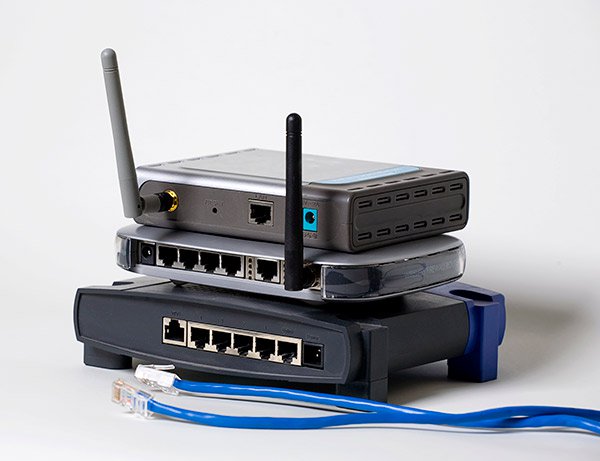 When you build out a wireless network, it is important to consider the different types of wireless broadcasting methods available.
When you build out a wireless network, it is important to consider the different types of wireless broadcasting methods available.
It can be difficult to decipher the difference between Wireless G, Wireless N, and Wireless AC. In this guide, we’ll demonstrate the differences of the various wireless transmission standards, and translate that into what you need to know for your enterprise wireless deployment.
Distinguishing the Differences between the Various Wireless Standards
Take a good look at the different types of wireless networking standards available on the market today. These bullet points breakdown many of the key differences:
- Wireless G (802.11g): Average speed is 54 Mbps with an average range of 125 ft
- Wireless N (802.11n): Average speed is 300+ Mbps with an average range of 230+ ft
- Wireless AC (802.11ac): Average speed is 1+ Gbps with an average range of 115 ft
So, which wireless networking standard is right for your business?
A Deeper Look at Wireless G
First introduced in the early 2000s, the Wireless G networking standard is a common signal that compatible with most laptops, desktops, and mobile devices that have a WiFi adapter inside. Most of your low end, older routers will utilize the Wireless G standard. In fact, devices that utilize Wireless B, an antiquated wireless standard, are also compatible with Wireless G.
Wireless G routers should work for your business if you only plan on hooking up a small network. Small businesses with 5 employees or less would likely be able to use a Wireless G router. If your network consists of more end users, you would likely need to upgrade to Wireless N.
Should Small to Medium Sized Organizations Consider Wireless N?
Possibly. Wireless N gives organizations the opportunity to provide more over-the-air bandwidth to the machines that authenticate onto the network.
A Wireless N router typically features two antennas, giving consumers the ability to utilize up to 300 Mbps. Advanced Wireless N routers are able to add a third antenna, thus allowing the device to provide up to a 450Mbps connection!
Most modern wireless adapters are compatible with Wireless N. Although Wireless G operates exclusively on the 2.4Ghz spectrum, Wireless N can operates on both the the 2.4Ghz and 5.0Ghz spectrums simultaneously. Businesses can mix and match these antennas, in order to gain additional range.
What is Wireless AC?
Wireless AC is a new wireless transmission standard that aims to maximize bandwidth. In fact, Wireless AC is sometimes called Gigabit WiFi because speeds can blaze past 1 Gbps.
Wireless AC is not supported on many WiFi adapters found in PCs, laptops, and mobile devices made in the past few years. Because of this, your computing platforms could require a special type of wireless networking adapter to communicate with a router broadcasting on Wireless AC.
These WiFi cards can be expensive, and at this point in time, Wireless AC compatible WiFi cards can be difficult to find on the market. It is important to keep this in mind as you begin to build out your enterprise WiFi offering.
Guests could potentially show up to your office and not have the right kind WiFi adapter, thus providing two undesirable scenarios:
- The user wouldn’t be allowed to connect to the network
- The user will be limited to a lower transmission standard, which could provide a slower networking connection
Compare and Contrasting the Different Connection Types for Businesses
If your business requires that you offer Gigabit WiFi (Wireless AC), you can expect to spend a significant amount of time researching, testing, and deploying specialized hardware that will achieve your organization’s core objectives.
When your business achieves Gigabit WiFi, the payoff is huge! Most organizations use Wireless AC in places such as meeting rooms, training rooms or computer labs.
Implementing Wireless N for your Business
Wireless N certainly has a place within businesses. Since Wireless N routers are backwards compatible with cards that only utilize Wireless G, providing a Wireless N router will allow your business to provide a robust wireless connection for different generations of WiFi adapters.
The drawback? Wireless N is significantly slower than Wireless AC. When you have large groups of people trying utilize the signal of a single WiFi router, you’ll likely have end users who complain about delays when they connect to website or when they are simply trying to fetch files from common network file servers.
Wireless N can cost significantly less than the new Wireless AC generation of wireless routers. Wireless N is commonly included on most WiFi routers today. Since most modern WiFi adapter support Wireless N, the technology is currently one of the most widely used within corporate environments today.
When businesses need to expand their Wireless N network, they can do so by simply bridging together multiple wireless access points to create an enterprise WiFi solution for your office space.
Does Wireless G Have a Place in Today’s Businesses?
Most WiFi routers on the market today support both Wireless G and Wireless N connections. If you’re looking at a router that only supports Wireless G, you’re likely looking at an antiquated device from the early-to-mid 2000s.
Currently, Wireless G networks are not recommended for offices that have more a couple employees. That being said, it is entirely possible that your business is still has a Wireless G router setup in your office. In fact, one of the best selling routers of all time, the popular Linksys WRT54G, supports Wireless G out of the box. These devices can still be commonly found in homes, hotels, schools, places of business, etc.
While Wireless G devices did what they were supposed to do, if you have one, it may be time to upgrade.
Recap of Wireless G, Wireless N and Wireless AC
Most businesses will likely use Wireless N as it has backwards compatibility for devices that only have a wireless networking adapter for Wireless G broadcasts. Wireless N is also the most affordable option for businesses that want to rapidly provision a wireless network for their facilities.
When performance is of the utmost importance, businesses should consider implementing Wireless AC (Gigabit WiFi). While this solution may cost more than a Wireless N solution, require additional planning, and needs more expertise to install, there are several reasons a business may want to go ahead and implement the next generation of WiFi technology.
In the world of wireless networking, you simply get what you pay for, most of the time. Keep that in mind as you continue to shop for the best wireless networking solutions for your organization. If you still need help deciding between these wireless options, give us a call at (833) 482-6435 or contact us online and we’ll help you make the best decision for your business!
{{cta(‘6f40e91b-3b4d-428d-9b4c-3e74b910bf29’)}}
If you enjoyed this IT Support article, please check out other posts on our blog and join us on Facebook, Twitter, LinkedIn, and Google+ to see how else we can help your Greenville, SC or Atlanta, GA area business succeed!
